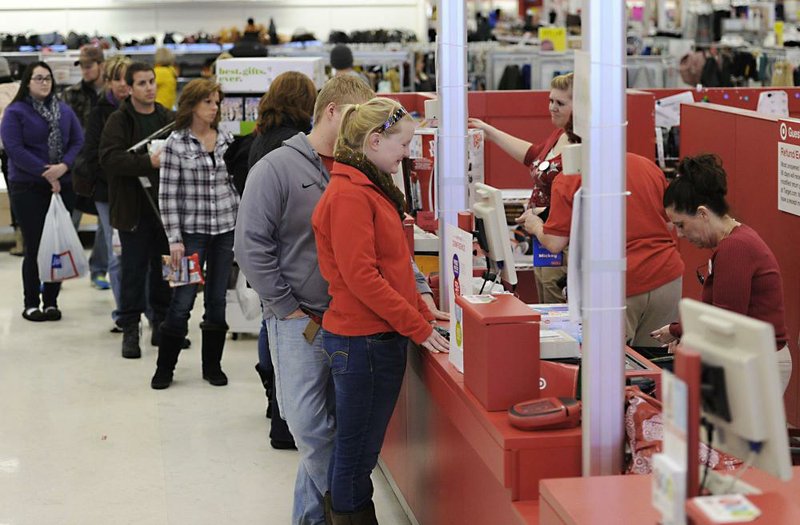CHICAGO -- Holiday shoppers who enjoyed the convenience of fulfilling wish lists with a simple click of the "buy" button are learning that the return process for online purchases can still be a hassle.
E-commerce purchases can be made with little effort, but shoppers say the returns are almost never as straightforward.
Lauren O'Connor would rather not have made the trip to a post office. But she needed to return a dog bed and coat that she bought online at Lands' End for her new puppy. Lands' End doesn't have a store near her home, so carting her online purchase back to a store, as some shoppers do, wasn't an option.
That's how she found herself waiting with an unwieldy square cardboard box while struggling to find a pen to address the package, all without forfeiting her place in a growing line.
"It's just a big hassle," she said.
Dealing with returns is a pain for retailers too, and one that's only getting bigger, said Chris Zubel, a managing director at real estate services firm CBRE.
Online sales are growing, and shoppers are more likely to return items bought over the Internet, Zubel said. That's because on-screen images don't always match an item's appearance, and consumers buying apparel often order the same item in multiple sizes or colors, intending to send all but one version back.
Estimates of the return rate for online purchases range from 15 percent to 30 percent, depending on the type of item purchased and who is asked, compared with 8 percent for all U.S. merchandise sales, according to a 2015 report from the National Retail Federation and software company The Retail Equation. The problem is worse at Christmas, when shoppers buy more gifts, apparently with mixed success. Overall merchandise return rates rise about 2 percent in November and December.
United Parcel Service sees a bump in shipping volumes throughout the month of January as customers return unwanted gifts, order items in exchange and spend gift cards, said spokesman Matthew O'Connor. But the first week of January is UPS' busiest period for e-commerce returns, tracked by using the preprinted shipping labels that some retailers provide to make returns easier for customers.
The early January flurry of activity is good news for shipping companies such as UPS, which expects to ship about 5.8 million returns this week, up from about 5 million last year, O'Connor said. It's not such great news for the customers making extra trips to ship return packages, or retailers that have to figure out what to do with extra merchandise that's returned.
Most returns for items that were purchased online go to stores, as long as the retailer has a location that is convenient for the customer. Unless the returned item is unusually bulky or something not typically stocked in the store, that's often the best outcome for the retailer, which can put the item back on a shelf and try to sell the customer something else.
A UPS survey found that 70 percent of online shoppers made extra purchases when returning items to stores, according to O'Connor. Only about 45 percent made additional purchases when processing returns online and then shipping them back.
Nearly 70 percent of retailers surveyed by the National Retail Federation at the end of 2015 let customers return gifts purchased online to their stores, up from 57 percent earlier that year.
Many retailers -- especially those that sell only online -- are working to make it easier for customers to ship returns back. California-based startup Happy Returns, for example, opened return stations at two Chicago-area malls where customers of five online merchants can drop off returns and get an immediate credit. Other retailers provide customers preprinted address labels or cover the cost of mailing items back.
Even though those efforts can cut into profits, Zubel said he hasn't seen retailers tightening return policies as online shopping has grown. Retailers weigh the cost of making returns as painless as possible against potential lost sales if customers are nervous about buying items they aren't positive they'll keep.
"The return policy becomes a competitive advantage," he said.
Some retailers are outsourcing returns to companies that specialize in taking back merchandise and squeezing as much value from them as possible, Zubel said.
Last year, FedEx acquired Genco, a logistics company that processes returns. UPS recently invested in Optoro, a software company that helps retailers and manufacturers handle returned and excess inventory.
"It's a high-tech solution for how to connect items to the next best home," said Optoro co-founder and Chief Executive Officer Tobin Moore, whose company takes a cut of any money it helps retailers recover.
Depending on the item's condition, it might go back to the retailer to be sold again, be returned to the vendor for a credit, be sold to a liquidator or on a secondary market, be recycled or be donated, Moore said.
For every consumer irritated that an ill-chosen Christmas gift comes with a bonus trip to the post office, others, like Jackie Fegan of Chicago try to put it in perspective.
There was no line at a nearby UPS store on a recent morning when she arrived to send a smart watch she'd given her son for Christmas back to Amazon. A friend talked him into using the money to fund a college spring break trip, she said.
Had she bought it at a local store, the return still would have required a trip. The day before, she'd spent 20 minutes in line at Target amid shoppers looking for post-Christmas deals.
"This is so much easier," Fegan said.
SundayMonday Business on 01/02/2017
